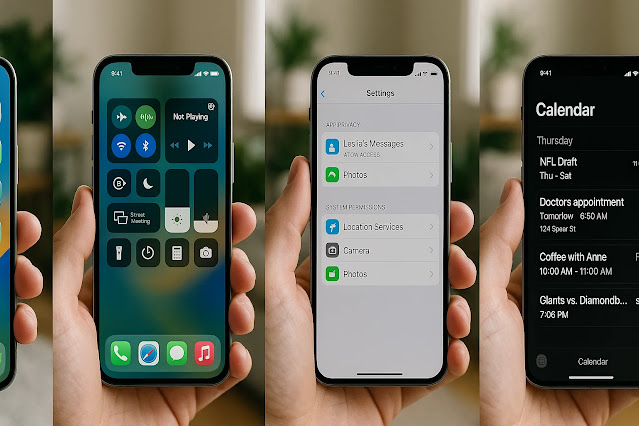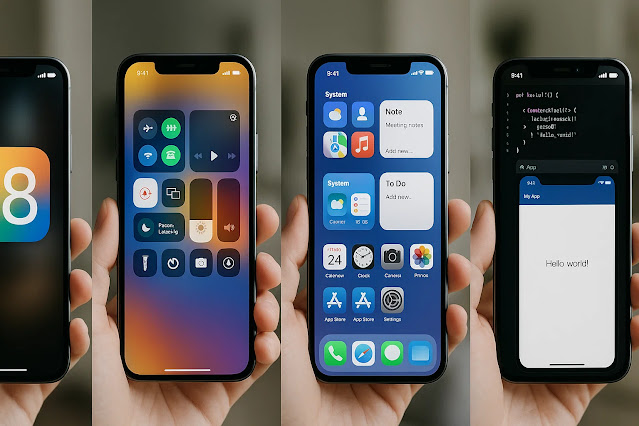Apple’s iOS 18 release brings a robust lineup of updates aimed directly at developers who want to create powerful, efficient, and future-ready apps. From SwiftData, new privacy controls, to Apple Intelligence, these changes make a strong case for optimizing every aspect of your development process and app design. Here’s a breakdown of the top iOS 18 features for developers, with examples, practical advice, and code samples to keep you ahead of the curve.
1. Overview of iOS 18 for Developers
iOS 18 arrived in June 2024 as a major update, compatible with all devices running iOS 17 and most late-model iPhones. This release isn’t just about small tweaks. Apple has focused on giving developers better tools for app performance, machine learning, privacy, and user engagement. The changes in iOS 18 features for developers mean you can offer smoother experiences and integrate advanced AI more easily.
Staying updated on these features isn’t optional if you want your apps to rank well and provide standout experiences. Understanding how new APIs, tools, and frameworks work lets you optimize for Apple Intelligence app development and address coming App Store ranking factors for 2025.
2. User Interface Enhancements
SwiftUI 5 and SwiftData
SwiftUI in iOS 18 adds new controls like toggle groups, enhanced grid layouts, and customizable navigation stacks. SwiftData, the new native persistence framework, streamlines local data storage with minimal boilerplate.
import SwiftData
@Model
class Note {
var title: String
var body: String
}
You can use SwiftData for high-performance model-driven UIs, all while syncing easily with iCloud. Performance improvements reduce lag and memory use, making UI updates almost seamless.
Interactive Widgets
Widgets now support full interactivity. Users can swipe, tap, and change content right on their home or lock screens. For example, you can update a to-do list, start timers, or interact with music controls without opening your app.
struct InteractiveWidget: Widget {
var body: some WidgetConfiguration {
StaticConfiguration(kind: "ExampleWidget", provider: Provider()) { entry in
Button("Complete Task") {
// handle action
}
}
}
}
Lock Screen Customization APIs
iOS 18 lets you place widgets directly on the lock screen with new APIs, giving developers more ways to engage users. You can surface time-sensitive info or quick actions, but need to handle privacy permissions carefully, as lock screen data is visible without device unlock.
3. Privacy and Security Features
App Privacy Report Enhancements
App Privacy Reports now offer richer data. You can track exactly when the app uses location, camera, or microphone, plus all domains your app contacts. These insights help you build trust and meet App Store privacy guidelines.
Permission Requests Improvements
Apple streamlined permission prompts in iOS 18. iOS prompts now focus on the main use case, showing more transparent language to users. Apps can 'soft prompt' before the system prompt, giving context as to why you’re asking for access.
On-Device Processing Updates
Apple Intelligence pushes even more ML and sensitive data handling to the device. This makes privacy handling much stronger, as user data rarely leaves the device. It also means your app’s ML features will run faster and with fewer privacy policy complications.
4. Development Tools and Language Updates
Xcode 15 Compatibility
Xcode 15 is required for iOS 18. It packs faster simulators, new debugging tools, and better views for SwiftData and SwiftUI apps. The new preview system lets you see multiple device configurations side-by-side.
Swift 6 Features for iOS 18
Swift 6 brings clearer async/await syntax, better error handling, and performance improvements. These changes make your code easier to read, safer, and faster.
Improved Code Signing and Deployment
App deployment has improved, with less emphasis on manual provisioning profiles. The new workflow reduces signing errors and helps you get iOS 18 apps on the App Store faster.
5. Networking and Data Handling
Improved URLSession Capabilities
URLSession now supports HTTP/3, improved monitoring, and background transfer updates. This reduces data stalling and improves reliability for background downloads.
Core Data Enhancements
Core Data in iOS 18 integrates with SwiftData for migration and syncing. New APIs let you migrate data and manage schema changes without complex migration code.
Network Debugging Tools
Xcode brings an improved Network Inspector, so you can analyze call traces, review payloads, and spot bugs faster.
6. Multimedia and Graphics
Metal 3 Updates
Metal 3 adds better GPU support for high-end graphics. New APIs help games and graphic apps run smoother and deliver richer effects, including dynamic scaling and ray tracing.
AVFoundation Enhancements
AVFoundation now supports new codecs, better HDR video, and faster capture. Video and audio editing apps benefit from real-time processing and smoother exports.
Camera API Improvements
iOS 18’s Camera APIs offer more granular control over photo and video capture, letting apps adjust zoom, focus, and exposure in real time. You can integrate features like ProRAW or cinematic video controls natively.
7. Machine Learning and Apple Intelligence
Core ML 5 Changes
Core ML 5 allows for larger models and improved quantization, speeding up inference without draining battery. Loading models at runtime is now more flexible.
let config = MLModelConfiguration()
let model = try! MyCustomModel(configuration: config)
On-Device AI Tools
Apple Intelligence brings on-device inference to a new level. Now, even complex natural language tasks (summarization, intent detection) run locally. This means less latency and more privacy.
Create ML Enhancements
Create ML streamlines model training, supports more data types, and offers visual progress tracking for developers.
8. Accessibility Features
VoiceOver and Spoken Content Updates
VoiceOver now supports custom control reading and offers more feedback for non-text controls. Apps using custom views can integrate with VoiceOver using simple Swift modifiers.
AssistiveTouch and Gesture Recognition
iOS 18 allows developers to create new gestures or customize existing ones. Apps can support multi-step gestures for users with limited mobility.
Dynamic Type and Font Scalability
Dynamic Type improves further, adapting fonts in all supported UI controls, which boosts readability and accessibility scores.
9. Augmented Reality and Spatial Computing
ARKit 7 Enhancements
ARKit 7 offers new tracking, scene reconstruction, and realistic object occlusion. Multi-user AR is easier to build, supporting shared experiences in classrooms, games, and productivity apps.
RealityKit 3 Updates
RealityKit 3 powers more realistic rendering, better physics, and smoother experiences when objects collide or interact.
LiDAR Integration Enhancements
Apps can now better use LiDAR data for instant depth mapping. This improves AR measurement, scanning, and 3D object placement accuracy.
10. Notifications and Messaging
Notification Interactions Updates
Notifications support images, videos, and even direct actions. Users can respond, complete tasks, or view short media without launching your app.
Focus Mode API Changes
Apps can check when Focus Mode is active and tailor notifications, making sure you never interrupt at the wrong time.
SharePlay and Collaborative Features
iOS 18 lets apps offer in-session collaboration with SharePlay. Users can work on docs, watch content, or game together live.
11. Health and Fitness Integration
HealthKit Updates
HealthKit now supports more data types, including new sensors for sleep, nutrition, and reproductive health. Enhanced controls let users share only the data they choose.
Fitness API Enhancements
Developers can track workouts in real time and access richer metrics for heart rate, steps, and active zones.
Sleep Tracking Data Access
Sleep data APIs allow for granular tracking (REM, deep sleep, wake time), so wellness apps can offer new insights.
12. Maps and Location Services
MapKit Improvements
MapKit adds new overlays and annotation styles, improved offline support, and real-time transit updates.
Location Accuracy and Permissions
Apps can now ask for different levels of location access with clearer explanations and improved privacy modes.
Indoor Mapping Capabilities
APIs are updated for robust indoor mapping, helping users navigate malls, airports, and large venues.
13. File Management and Cloud
Files App Integration
Better APIs allow apps to interact with the Files app for advanced document management and sharing.
iCloud Drive Enhancements
Syncing is faster and more reliable, with improved conflict resolution. Apps can now access shared folders and richer file metadata.
External Storage Support
Connecting and managing files from USB drives or memory cards is easier, offering users more flexibility.
14. App Clips and Instant Experiences
New Capabilities in App Clips
App Clips now support larger bundles, more workflows, and easier linking to the main app. You can drive user acquisition with focused, instant experiences.
QR Code and NFC Improvements
Trigger App Clips more reliably through QR codes or NFC tags, with support for custom actions and analytics.
15. Batteries and Performance Monitoring
Energy Usage APIs
Track app battery use in real time. Get warnings if your app starts to drain more than expected.
Performance Metrics in Instruments
Updated Instruments tools let you profile everything from FPS, network calls, and memory, so you can keep your app running smoothly and responsive, even with iOS 18’s added features.
16. Internationalization and Localization
Support for New Languages and Regions
iOS 18 expands language packs and locale coverage, supporting even more users worldwide with native translations and date formats.
Right-to-Left (RTL) Layout Enhancements
Apple improved RTL support in UI layout tools; mirrored navigation and auto-alignment now extend to custom views with minimal extra code.
Dynamic Language Switching
Your app can now switch languages in real-time without a restart, driving better multi-language support and user satisfaction.
17. Developer Account and App Store Changes
App Store Connect Updates
App Store Connect now includes new metadata fields, advanced analytics, and quicker review times. You can use these updates to track how iOS 18 features for developers impact downloads and engagement.
In-App Purchase Enhancements
Subscriptions now support new product types, trial configurations, and seamless upgrades or downgrades, all improving your in-app revenue potential.
TestFlight Improvements
TestFlight gets better device metrics, group management, and feedback tools, making testing for Apple Intelligence app development even smoother. These tools help you address App Store ranking factors 2025 by getting more feedback before launch.
18. Tips for Adopting iOS 18 Features
Gradual Implementation Strategies
Add iOS 18 features to your app in phases. Begin with SwiftData or widget updates, then move to more complex changes like Apple Intelligence integration. This lessens disruption and helps you catch bugs early.
Backward Compatibility Considerations
Use runtime checks and availability macros to ensure your app still runs well on iOS 17 or earlier:
if #available(iOS 18, *) {
// Use new feature
} else {
// Fallback for older systems
}
Testing Best Practices
Take advantage of Xcode’s enhanced previews and Instruments updates. Automate as much testing as you can to catch regressions faster.
19. Summary of Key API Changes
Here’s a quick reference for major API shifts:
- Deprecated: Old SceneDelegate/UIWindowScene in favor of new SwiftUI lifecycle.
- New: SwiftData, enhanced WidgetKit, updated CoreML and HealthKit APIs.
- Changed: URLSession/networking, Core Data migration, MapKit overlays.
Focus on migration early so you don’t get caught by surprise when support drops for older APIs.
20. Resources for Developers
- Official Documentation: Apple’s Developer Portal has up-to-date iOS 18 release notes, sample code, and migration guides.
- Community Discussions: Check forums, Twitter, and slack groups for practical advice on SwiftData and Apple Intelligence app development.
- Sample Projects & Tutorials: Build off ready-made samples to speed up feature testing.
If you want more context on iOS app trends or Apple Intelligence roadmap, check out the March 2023 iPhone Developers Insights.
Conclusion
iOS 18 brings substantial opportunities for developers wanting to build smarter, faster, and more user-focused apps. With SwiftData, interactive widgets, Apple Intelligence, and new privacy tools, you have everything you need to deliver top-tier experiences.
Adapt to these updates quickly for better App Store ranking factors 2025 and to stand out in a competitive market. Regularly testing and optimizing your app for iOS 18 features for developers keeps you current as Apple continues to push forward. Try out these new APIs, share feedback in developer forums, and help shape the next generation of iPhone apps.
Ready to start? Integrate these tools, refine your app, and see how your users respond.



